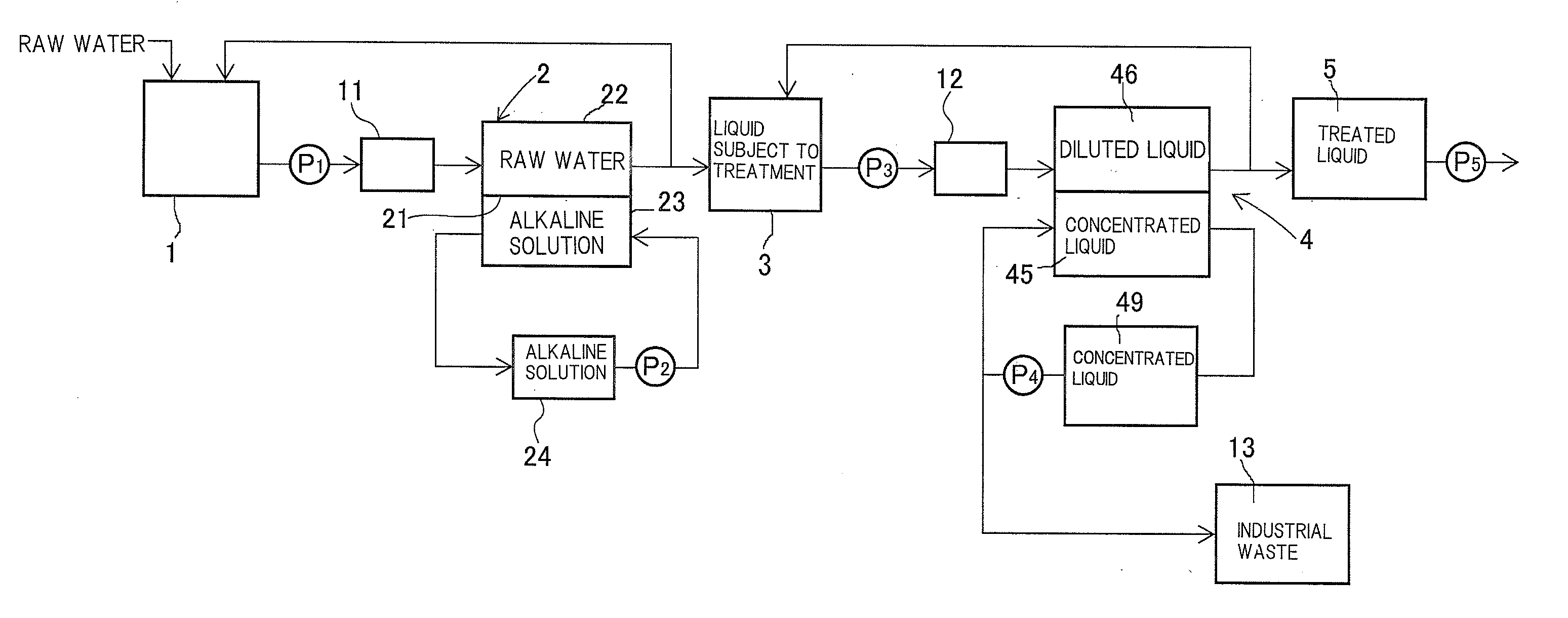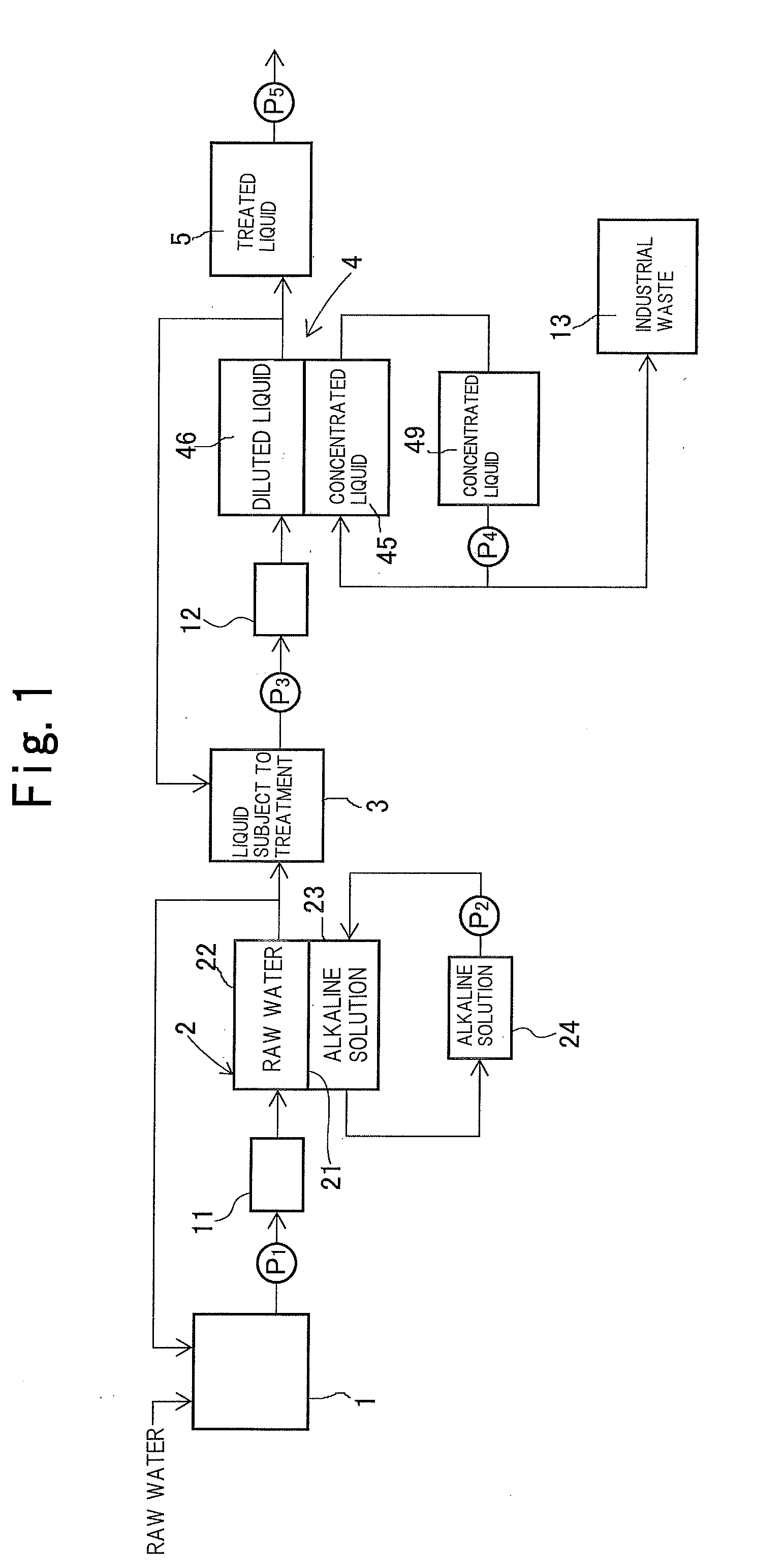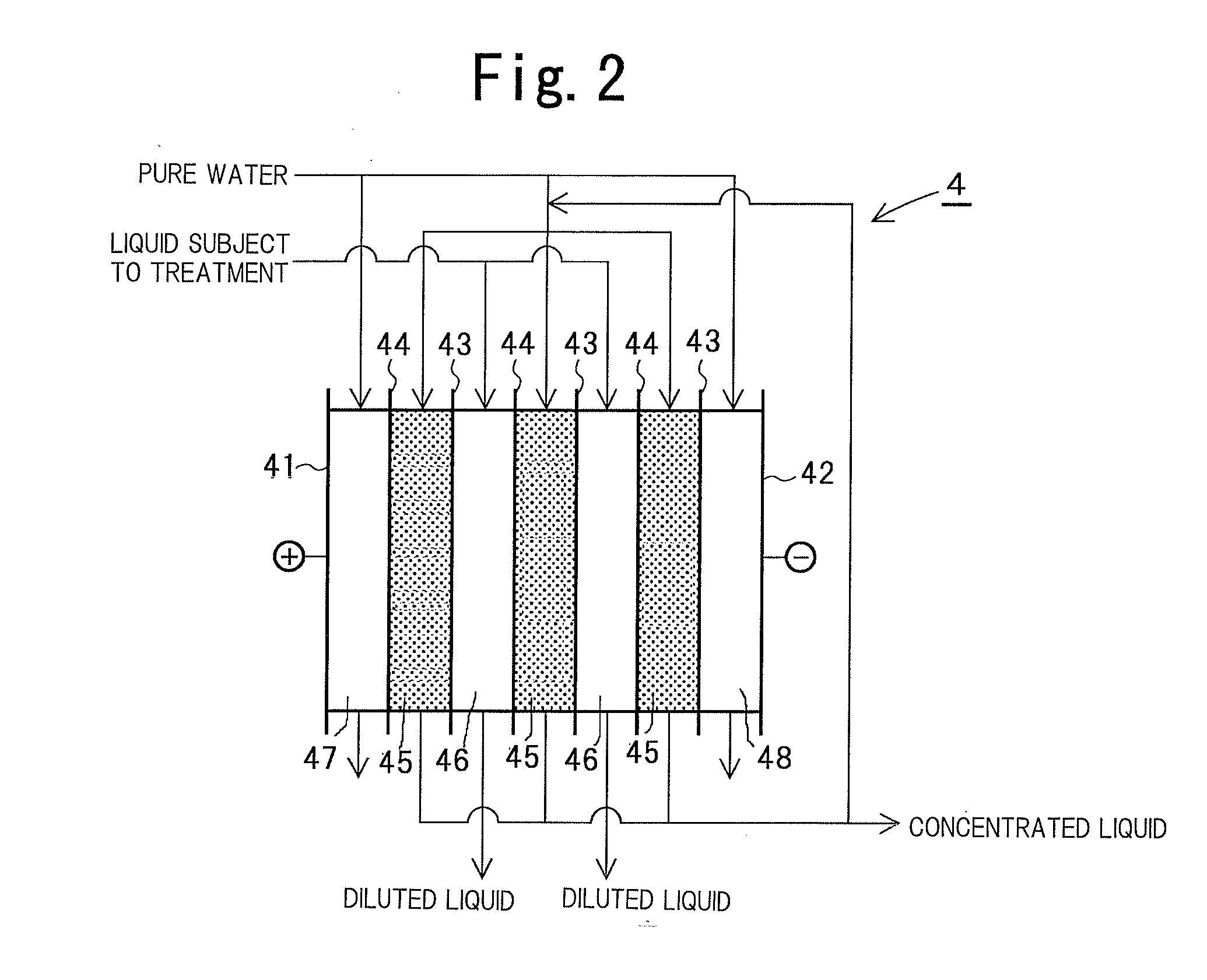Apparatus and method for treating nitrogen compound-containing acidic liquid
a nitrogen compound and acidic liquid technology, applied in the field of apparatus and a method for treating nitrogen compound-containing acidic liquid, can solve the problems of high energy cost of treatment, low reaction rate, contaminated rivers and lakes, etc., and achieve the effect of reducing the migration efficiency of nitrogen compound, reducing the cost of treatment, and efficient removal
- Summary
- Abstract
- Description
- Claims
- Application Information
AI Technical Summary
Benefits of technology
Problems solved by technology
Method used
Image
Examples
example 1
[0117]Treatments were carried out in the same manner as in COMPARATIVE EXAMPLE 1, except that the condemi regeneration acidic waste liquid was neutralized and demineralized by being passed through a neutralization dialysis device (manufactured by ASTOM Corporation) in which the wetted surface had been coated with polytetrafluoroethylene, and was thereafter treated with the electrodeionizer.
[0118]The systematic diagram of this neutralization dialysis device is illustrated in FIG. 5. In FIG. 5, members having the same function as the members shown in FIG. 1 are assigned with an identical reference sign.
[0119]This neutralization dialysis device was configured such that the liquid subject to treatment contained in a raw water tank 1 was delivered to a raw water camber 22 by a pump P1 and was thereafter circulated to the raw water tank 1, while an alkaline solution in an alkaline solution storage tank 24 was circulated through an alkaline solution chamber 23.
[0120]The neutralization dial...
example 2
[0130]The treatments were carried out in the same manner as described in EXAMPLE 1, except that the electrodeionizer was energized at 4 A and the current density was 5.3 A / dm2. The MEA migration rate and the current efficiency in MEA migration were determined in the similar manner. The results are described in Table 3.
TABLE 3CurrentMEACurrentdensity inmigrationefficiency inelectrodeionizerrateMEA migration(A / dm2)(g / hr / dm2)(%)COMP. EXAMPLE 13.30.192.3(Electric deionizationtreatment withoutneutralization dialysis)EXAMPLE 13.33.547(Neutralization dialysisfollowed by electricdeionization treatment)EXAMPLE 25.34.436(Neutralization dialysisfollowed by electricdeionization treatment)
TABLE 4EXAMPLE 1AnionCondemiNeutralizedAlka-exchangeregenerationdemin-linetreatmentacidiceralizedsolu-water inwaste liquidliquidtionCOMP. EX. 2pH0.17.813.27.4Electrical—5370121004300conductivity(mS / m)TOC (mg / L)4820594016803050Cl− (mg / L)54000213003040016400NH3—N (mg / L)221027205491200Na+ (mg / L)—456029700—MEA (mg / ...
reference example 1
[0142]The treatment with the electrodeionizer described in EXAMPLE 1 was continuously performed for 20 days. After the 20-day treatment, the voltage and the pressure loss in the anode chamber were examined. The increases relative to the initial values were determined. The results are described in Table 7.
PUM
| Property | Measurement | Unit |
|---|---|---|
| concentration | aaaaa | aaaaa |
| surface velocity | aaaaa | aaaaa |
| pH | aaaaa | aaaaa |
Abstract
Description
Claims
Application Information
 Login to View More
Login to View More - R&D
- Intellectual Property
- Life Sciences
- Materials
- Tech Scout
- Unparalleled Data Quality
- Higher Quality Content
- 60% Fewer Hallucinations
Browse by: Latest US Patents, China's latest patents, Technical Efficacy Thesaurus, Application Domain, Technology Topic, Popular Technical Reports.
© 2025 PatSnap. All rights reserved.Legal|Privacy policy|Modern Slavery Act Transparency Statement|Sitemap|About US| Contact US: help@patsnap.com



